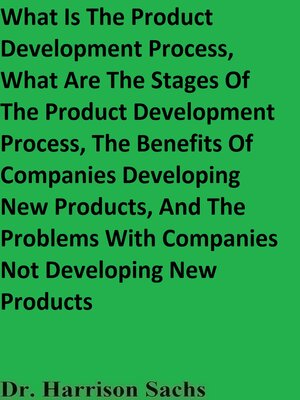What Is the Product Development Process, What Are the Stages of the Product Development Process, the Benefits of Companies Developing New Products, and the Problems With...
audiobook (Unabridged)
By Dr. Harrison Sachs

Sign up to save your library
With an OverDrive account, you can save your favorite libraries for at-a-glance information about availability. Find out more about OverDrive accounts.
Find this title in Libby, the library reading app by OverDrive.



Search for a digital library with this title
Title found at these libraries:
| Library Name | Distance |
|---|---|
| Loading... |
This audiobook is narrated by a digital voice.
This essay sheds light on what is the product development process, identifies the stages of the product development process, explicates the benefits of companies developing new products, and demystifies the problems with companies not developing new products. Succinctly stated, the product development process refers to all of the stages of the product development process which commences with the idea generation stage and ends with the commercialization stage. The product development process is inclusive of all the stages that the product goes through from its inception in the chasms of the human mind as a product concept to its release in retail stores. The product development process can vary from product to product. The product development process is a far less long-winded process for simple digital products and is a significantly more long-winded process for intricate tangible products. Even though not every product has to go through all the stages of the product development process to be released in the market, such as a song being released in the market for commercial purpose after it has been developed without it having received feedback from stakeholders before it was released in the market, most tangible products however go through a long-winded product development process. It is easier to release a digital product, such as a digital course, digital song, or mobile application, then it is to release a tangible product. This is because there are typically no upfront costs associated with releasing digital products on digital distribution platforms. If you do not own a digital distribution platform and if your digital products earn product unit sales on a digital distribution platform, then you will typically need to be pay the company who owns the digital distribution platform a percentage of the sales revenue that was generated on its digital distribution platform from your product unit sales.







